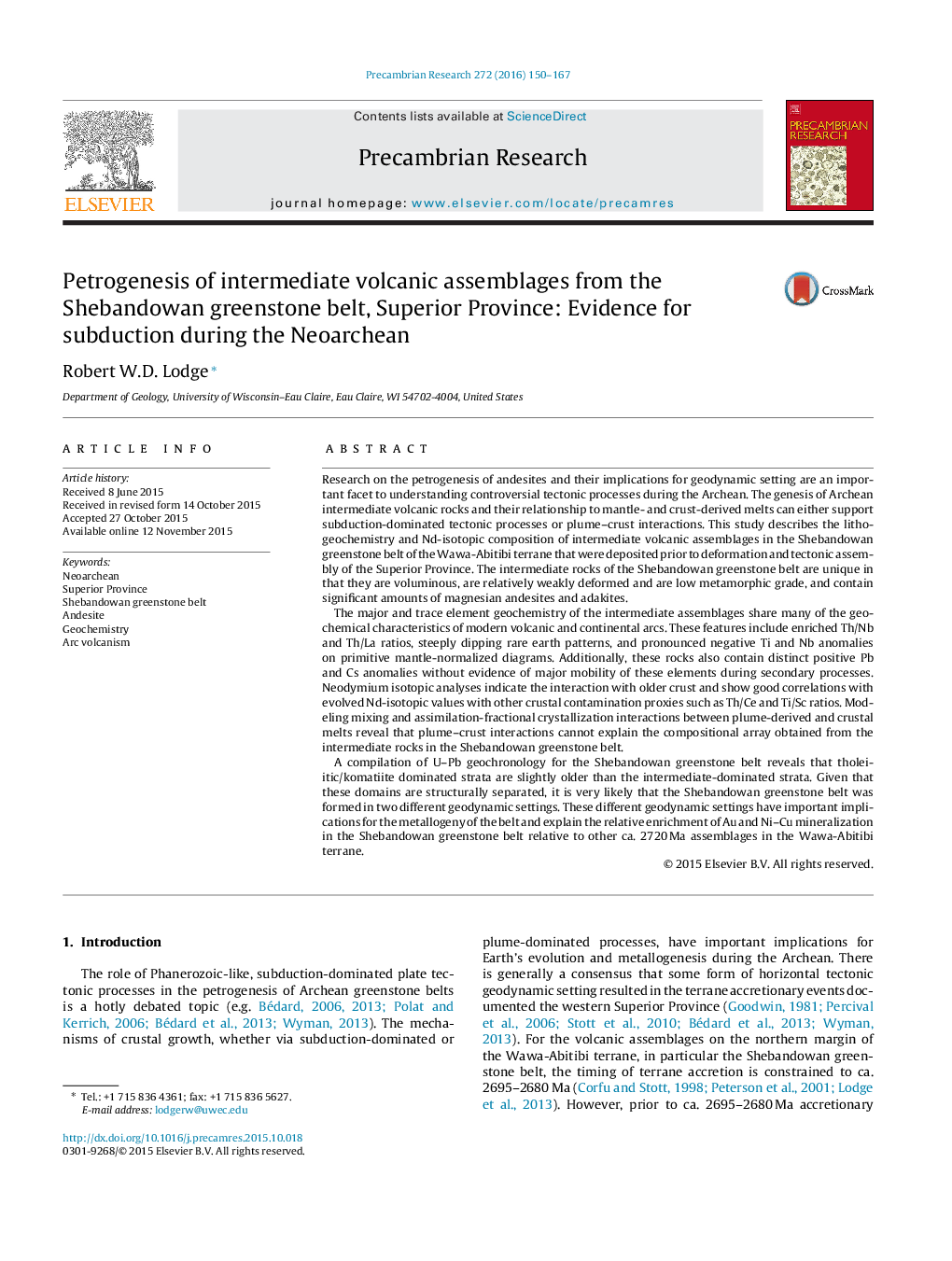| کد مقاله | کد نشریه | سال انتشار | مقاله انگلیسی | نسخه تمام متن |
|---|---|---|---|---|
| 4722441 | 1639603 | 2016 | 18 صفحه PDF | دانلود رایگان |

• Presents geochemistry and spatial associations of Neoarchean intermediate rocks.
• Determined petrogenesis by modeling interactions between potential parent melts.
• Trace element and Nd-isotope systematics suggest an arc-like geodynamic setting.
• Revised stratigraphy based on temporal variations in geodynamic settings.
Research on the petrogenesis of andesites and their implications for geodynamic setting are an important facet to understanding controversial tectonic processes during the Archean. The genesis of Archean intermediate volcanic rocks and their relationship to mantle- and crust-derived melts can either support subduction-dominated tectonic processes or plume–crust interactions. This study describes the lithogeochemistry and Nd-isotopic composition of intermediate volcanic assemblages in the Shebandowan greenstone belt of the Wawa-Abitibi terrane that were deposited prior to deformation and tectonic assembly of the Superior Province. The intermediate rocks of the Shebandowan greenstone belt are unique in that they are voluminous, are relatively weakly deformed and are low metamorphic grade, and contain significant amounts of magnesian andesites and adakites.The major and trace element geochemistry of the intermediate assemblages share many of the geochemical characteristics of modern volcanic and continental arcs. These features include enriched Th/Nb and Th/La ratios, steeply dipping rare earth patterns, and pronounced negative Ti and Nb anomalies on primitive mantle-normalized diagrams. Additionally, these rocks also contain distinct positive Pb and Cs anomalies without evidence of major mobility of these elements during secondary processes. Neodymium isotopic analyses indicate the interaction with older crust and show good correlations with evolved Nd-isotopic values with other crustal contamination proxies such as Th/Ce and Ti/Sc ratios. Modeling mixing and assimilation-fractional crystallization interactions between plume-derived and crustal melts reveal that plume–crust interactions cannot explain the compositional array obtained from the intermediate rocks in the Shebandowan greenstone belt.A compilation of U–Pb geochronology for the Shebandowan greenstone belt reveals that tholeiitic/komatiite dominated strata are slightly older than the intermediate-dominated strata. Given that these domains are structurally separated, it is very likely that the Shebandowan greenstone belt was formed in two different geodynamic settings. These different geodynamic settings have important implications for the metallogeny of the belt and explain the relative enrichment of Au and Ni–Cu mineralization in the Shebandowan greenstone belt relative to other ca. 2720 Ma assemblages in the Wawa-Abitibi terrane.
Journal: Precambrian Research - Volume 272, January 2016, Pages 150–167